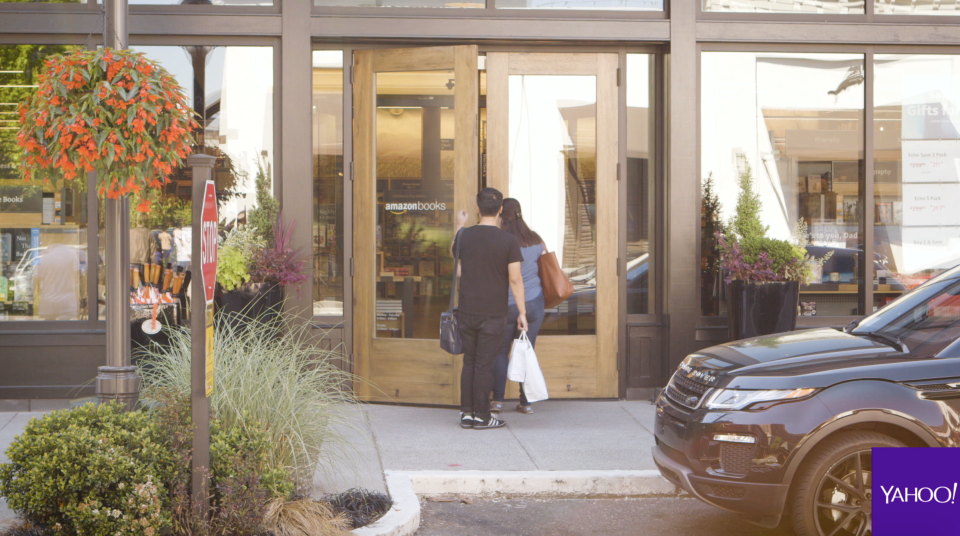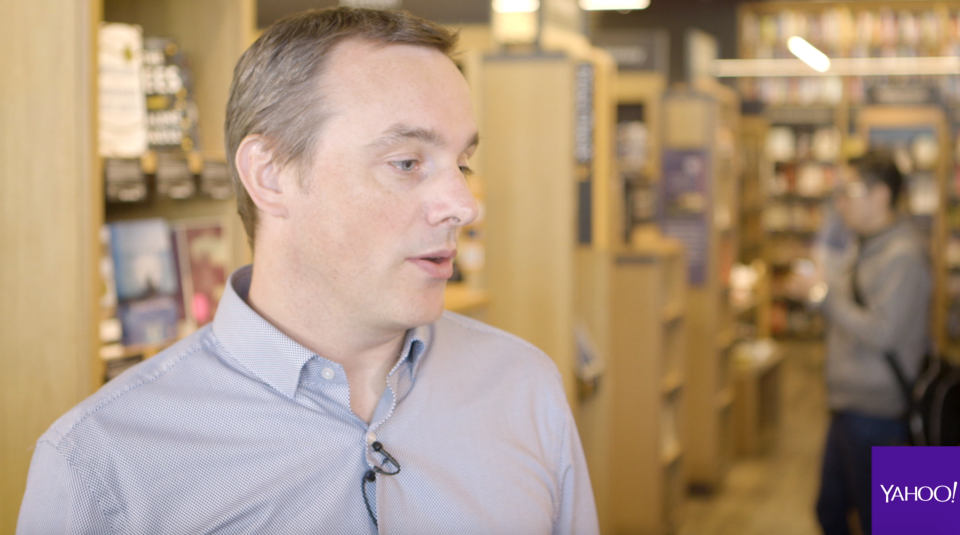Amazon's physical bookstores are coming to 3 more US cities
A tech giant synonymous with e-commerce is continuing its rapid expansion into the physical retail space throughout the U.S. Not only is Amazon (AMZN) bringing its cashier-free grocery stores to San Francisco and Chicago, but it’s also expanding its physical bookstores, Amazon Books, to more U.S cities.
Amazon has confirmed it plans to open at least three more locations in Los Angeles, Bethesda, Maryland, and Lone Tree, Colorado, joining an aggressive expansion effort that includes 15 stores opened in the last two years.
Amazon Books can currently be found in the following U.S. cities: Seattle; Los Angeles; San Diego; Austin; Washington, D.C.; Chicago, Walnut Creek, California; San Jose, California; Dedham, Massachusetts; Lynnfield, Massachusetts, Paramus, New Jersey; Portland, Oregon; Bellevue, Washington; and two locations in New York City.

“It goes back to what Amazon is all about: We’re customer-focused, and we’re always looking to see if we can do things slightly differently and better for our customers,” Amazon Books VP Cameron Janes tells Yahoo Finance. “Can we create a bookstore that adds something new and helps customers discover books in a new and interesting way? Can we help them discover and interact with our devices in person in a new and interesting way?”
Janes describes Amazon Books as an “extension of Amazon.com.” Certainly, that’s an apt description for the stores, though they trigger memories of bookstores of yore at first blush: the old mom and pop shops, the now-defunct Borders and Waldenbooks, even the flailing Barnes & Noble (BKS).
A distinctly Amazonian bookstore

But on closer inspection, you’ll notice some downright Amazonian touches. For one, the store doesn’t accept cash. Making a purchase means paying with a credit card or the Amazon app if you’re an Amazon Prime subscriber.
Books at the store, which are displayed with their covers showing, are chosen based on a mix of factors, including whether they’re rated four stars or higher by Amazon readers, new titles or top sellers. Titles labeled as “Page Turners” are books customers can read on their Kindle, on average, in three days or less. Likewise, the self-explanatory “100 Books To Read In A Lifetime” section closely mirrors Amazon’s online chart.

Recommendations are a large part of the Amazon.com shopping experience, and Amazon Books is no different. The stores deploy versions of Amazon’s online recommendations, albeit of course in the real world. “If You Like” highlights a bestseller like say, Celeste Ng’s period drama, “Little Fires Everywhere,” alongside five or six books Amazon thinks you’ll like. According to Janes, those recommendations are books rated four stars or higher but might be ranked lower on Amazon.com in terms of sales — potentially in the tens of thousands or hundreds of thousands.
“It’s another way for customers to find something they know they’re familiar with and then pair it with something they might not be familiar with as a jumping-off point to try something new,” Janes explained.
Amazon’s big physical retail push
There’s a certain irony that over 20 years after Amazon helped kicked off the transition to online retail — a movement that led to countless brick-and-mortar stores shuttering — the tech giant is now plowing ahead into physical retail. Besides Amazon Books, which plans to expand into several new cities, Amazon now has gadget kiosks in malls, mini-smart home shops inside Kohl’s department stores, a cashier-less grocery store (with at least two more to come), and then of course, Whole Foods supermarkets, which the Seattle company acquired last August for $13.7 billion.
For Amazon, all those efforts are a way to meet the shopping masses where they are today. Sure, Amazon.com generated nearly $27 billion in revenues during the first quarter of this year, but nearly 91% of U.S. retail sales still occur in physical stores, according to the U.S. Census Bureau. Case in point: Amazon physical store revenues rose a whopping 234% over the last three quarters to $4.2 billion in first-quarter 2018.
“We put our 20 years of online retailing experience to use to help build a bookstore and book-buying experience that combines the benefits of the offline and online shopping to create this kind of unique experience here,” Janes added. “It’s all about coming in here and discovering something new.”
And if bookworms pick up a book or two in the process, well, then, so be it.
—
JP Mangalindan is the Chief Tech Correspondent for Yahoo Finance covering the intersection of tech and business. Email story tips and musings to jpm@oath.com. Follow him on Twitter or Facebook.
More from JP
Why Apple, Facebook and Google are worried about your ‘digital well-being’
Amazon Go chief: We got rid of a ‘not great’ thing about physical retail
How Facebook is ‘getting ahead of the curve’ with new Blockchain unit
Tinder CEO on Facebook’s dating service: ‘They have an interesting set of baggage’
Facebook’s standalone Oculus Go is a solid headset for newbies

 Yahoo Finance
Yahoo Finance 
